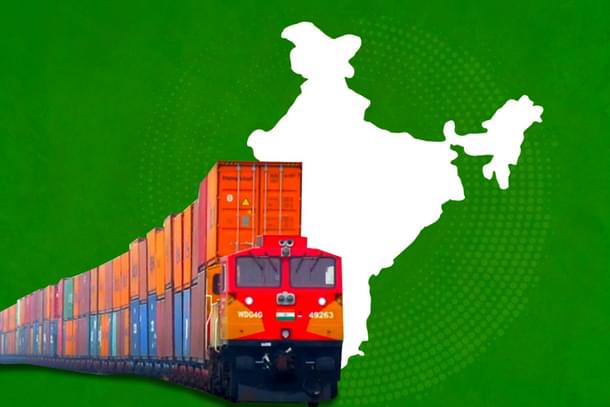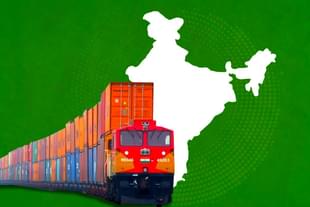Infrastructure
Three New Freight Corridors In The Works To Enhance Rail Connectivity Across India
V Bhagya Subhashini
Jul 24, 2024, 04:26 PM | Updated 05:59 PM IST
Save & read from anywhere!
Bookmark stories for easy access on any device or the Swarajya app.


Detailed project reports (DPRs) for new corridors have already been submitted to the Railway Board, according to Ravindra Kumar Jain, Managing Director of the Dedicated Freight Corridor Corporation of India Ltd (DFCCIL).
The new corridors are — the East Coast Freight Corridor from Kharagpur (West Bengal) to Vijayawada (Andhra Pradesh), the East-West Corridor from Kharagpur to Palghar (Maharashtra), and the North-South Freight Corridor from Vijayawada to Itarsi (Madhya Pradesh).
Covering a combined distance of 4,300 kilometres, with an estimated project cost of Rs 2,00,000 crore, these corridors will cater to specific commodities and span key regions across the country.
Two multilateral agencies, the Japan International Cooperation Agency (JICA) and the World Bank, have expressed interest in financing three proposed dedicated freight corridors in India.
While the Railways have sufficient infrastructure funds, funding from multilateral agencies remains a viable option if needed.
Jain highlighted the near-completion of the existing Dedicated Freight Corridor (DFC), which covers 2,843 km across the Eastern and Western arms and is now 96.4 per cent complete. This corridor passes through 56 districts in seven states, with average traffic increasing by 60 per cent over the last year.
In an interview with Businessline, Jain stated the final leg of the Western Dedicated Freight Corridor (WDFC), stating that 93.2 per cent of the WDFC is complete, including the feeder route to various ports.
Approximately 100 km remains unfinished, with 50 per cent of this segment already completed. Jain anticipates the entire stretch will be operational by December 2025, with contracts issued to ensure timely completion.
Currently, over 320 trains run daily across the two DFC arms, with 200 trains on the Eastern DFC and 120 on the Western DFC.
Jain expects this number to increase to 400 by year-end. The DFCs have created significant line capacity, with an estimated 40-50 per cent currently utilised, which can potentially increase to 150 per cent. Each corridor has a line capacity of 120 trains in each direction, totalling 480 trains.
Beyond traditional cargo like coal, perishables, and auto parts, DFCCIL is expanding its scope to include e-commerce and LNG container movement. The organisation is also exploring ‘Over Dimensional Cargo’ (ODCs) and plans to start automobile movement along the Western DFC from Surat to Kanpur and beyond.
Prime Minister Narendra Modi inaugurated the DFC network on 12 December 2020, hailing it as a game changer for India in the 21st century and a catalyst for rapid national development.
The DFC project is strategically aligned with the National Rail Plan, which sets a bold objective — to increase the railway's modal share in India from the existing 28 per cent to an impressive 44 per cent by the year 2051.
Crucially, the DFC is not just a railway project; it's a linchpin of the National Logistics Policy, aiming to reduce logistics costs from the current 15 per cent of GDP to a more sustainable 8 per cent by 2030.
These Dedicated Freight Corridor projects will not only unlock economic potential but also play a critical role in decongesting the already saturated road network.
By promoting the shift of freight transport to the more efficient rail transport system, these corridors will significantly reduce congestion on highways.
V Bhagya Subhashini is a staff writer at Swarajya. She tracks infrastructure developments.





